Changes in my shop
2011 passed very fast. I stayed busy but didn’t get many of my planned projects finished. Looking back I realise that it really doesn’t matter. It was a great year and I had much fun. I didn’t keep up the web site. I started many posts but never seemed to finish anything. The weather was rainy and stormy in the spring, which kept me very busy cleaning up broken trees. Then it turned dry and sunny for the rest of summer and I spent most of my time outdoors.
Below is a picture of metal car on my shop wall. It was a Birthday gift from my Son, Daughter-in-law and two Boys. They have a knack for picking gifts that this old man loves.
I spend a lot of time in my shop and it is filled with things. Every thing has a story, a memory and sometimes a use. Sometimes I just sit and look and let the good memory’s flood in. Friends and good times, long since past, come awake again.
I have always loved to tinker. At a early age I started taking things apart just to see what was inside them, and what made them work. Looking back I can see my father was very tolerant. I was encouraged to disassemble junk items rather than good stuff and allowed full access to his workshop and tools. Over time I learned to put things back together again and eventually I made my living doing just that.
You will also note the old wood wall mount telephone on the wall. I found it in Arkansas last winter when we were south. My memory identifies it as a match to the one on kitchen wall when I was a child. I was always fascinated by the old telephone with a crank on the side instead of a dial. There were 8 to 10 people on the party line. When any phone rang, all the phones rang. needles to say privacy was non-existent. No one would admit “Rubbering”, as listening in was then called. With no electricity limiting radio use, small children and lots of hard work, the diversion of “Rubbering” was understandable.
My mother was too busy to listen to the radio one morning when the phone rang. It was the local radio station’s morning quiz show. They asked a question that would have been simple had she been listening to the show. Her mind was so busy with the days work it just couldn’t move onto the question. The clocked ticked off as she stood silent by the phone. Suddenly a woman’s voice blurted out the answer and my mother was declared the winner of a small gift certificate at one of the show sponsors. My mother would have been glad to share the gift, but no one would ever admit to being the voice. I must add, that unlike today, the tone quality of the old phones was very poor. Recognising the voice for sure was impossible.
Quite a change from the wireless phone next to it. I just couldn’t resist buying that old phone even though it doesn’t work, but that is a future project.
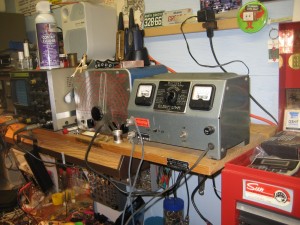 This is my old Mallory model 12RS6D power supply. It is one of the handiest things I have at my work bench. It provides either 6 volts at 10 amp or 12 volts at 6 amp. Up to 20 Amp intermittently. What makes it even better is the voltage is variable. Adjustable from nothing to about 15 volts. Very handy when playing with things.
This is my old Mallory model 12RS6D power supply. It is one of the handiest things I have at my work bench. It provides either 6 volts at 10 amp or 12 volts at 6 amp. Up to 20 Amp intermittently. What makes it even better is the voltage is variable. Adjustable from nothing to about 15 volts. Very handy when playing with things.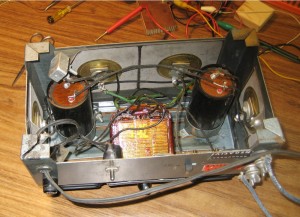
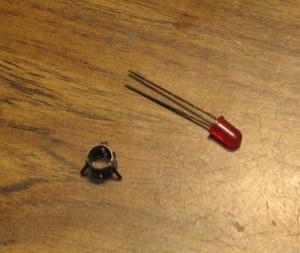
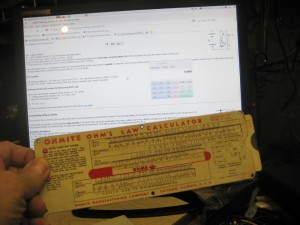
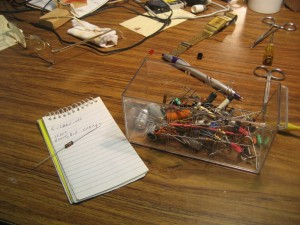 Digging through my stuff I came up with some goodies.
Digging through my stuff I came up with some goodies.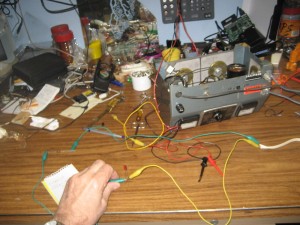
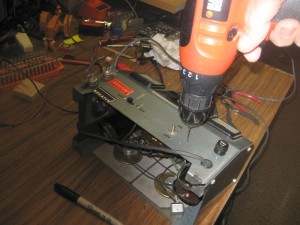
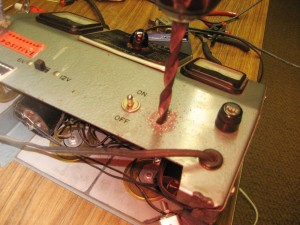 Here we are drilling the hole for the LED. Notice how heavy the steel in the case is, no skimping here. When this power supply was built, a battery powered electric drill was unbelievable. Electric drills were bulky, heavy, expensive and only starting to become common.
Here we are drilling the hole for the LED. Notice how heavy the steel in the case is, no skimping here. When this power supply was built, a battery powered electric drill was unbelievable. Electric drills were bulky, heavy, expensive and only starting to become common.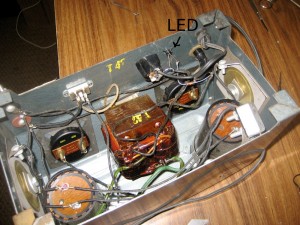
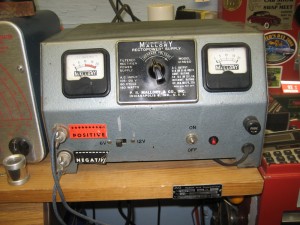
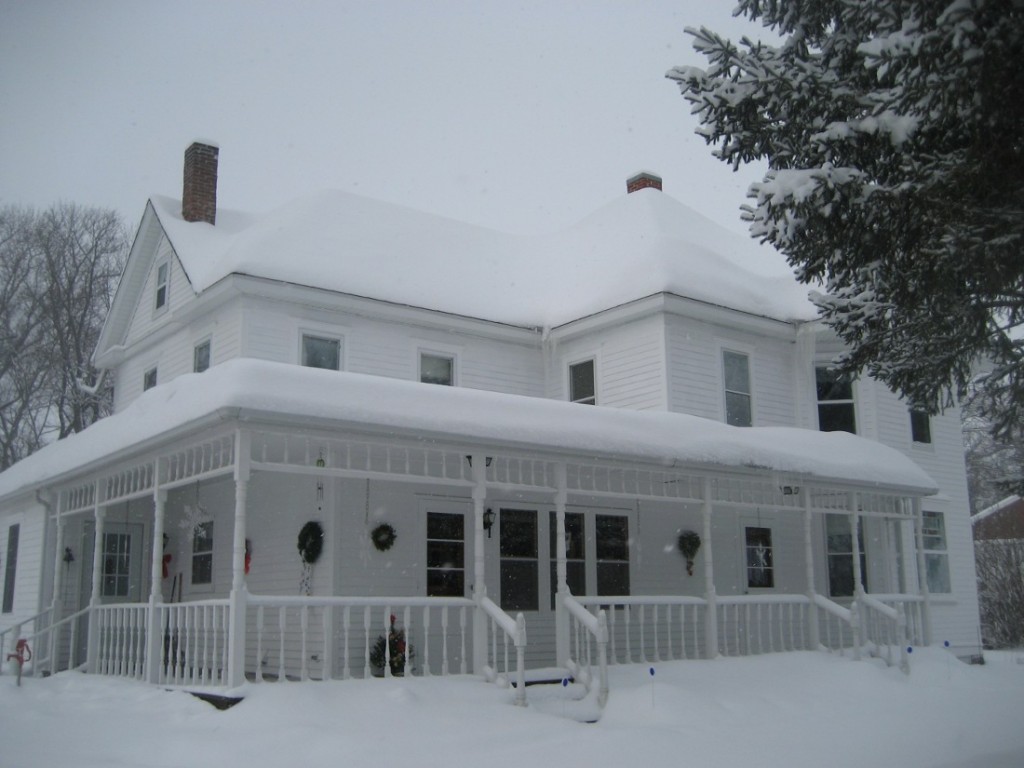
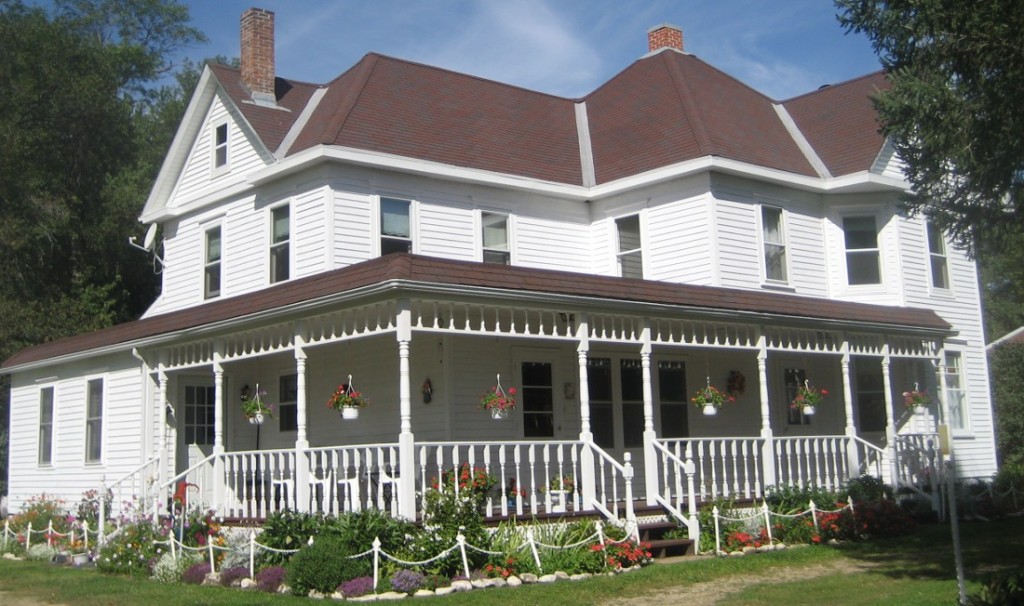
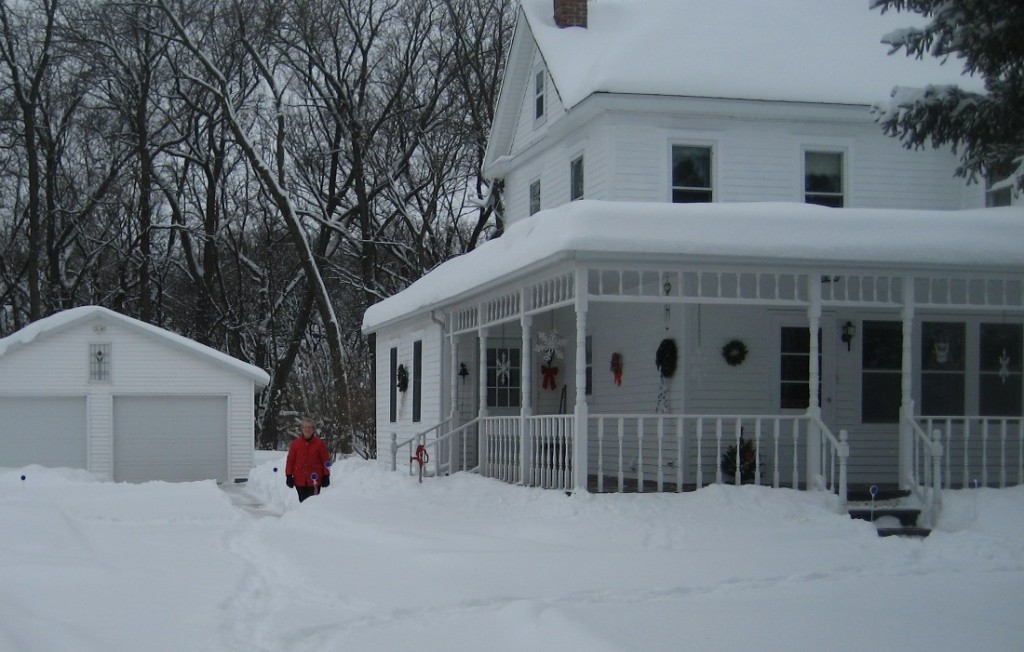
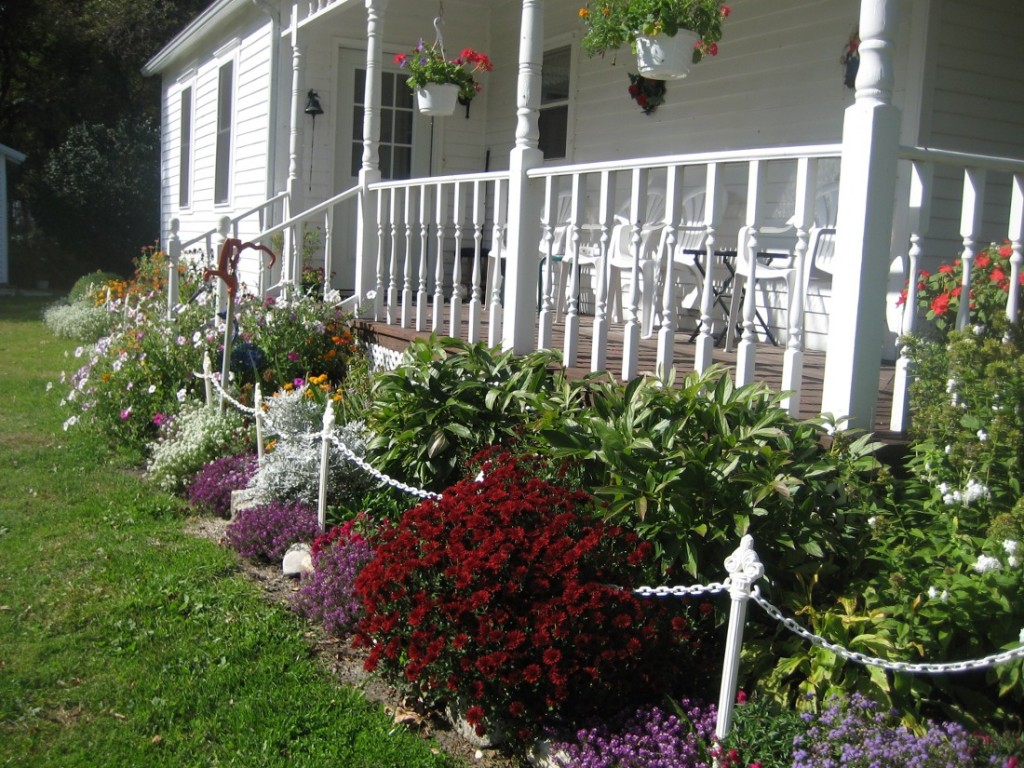
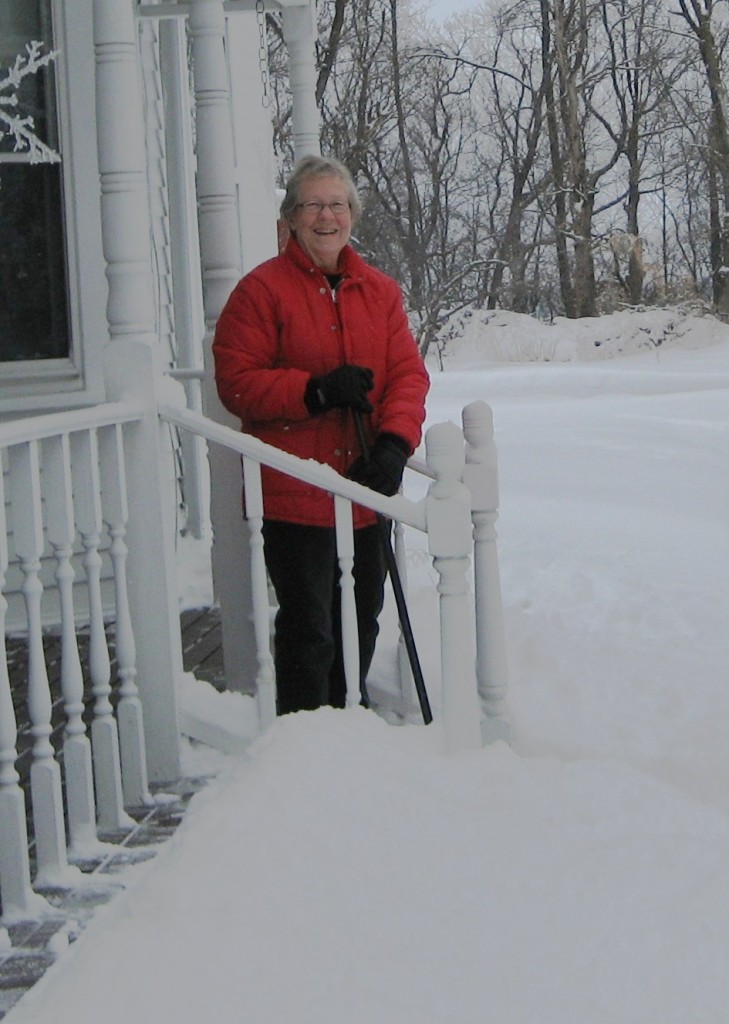
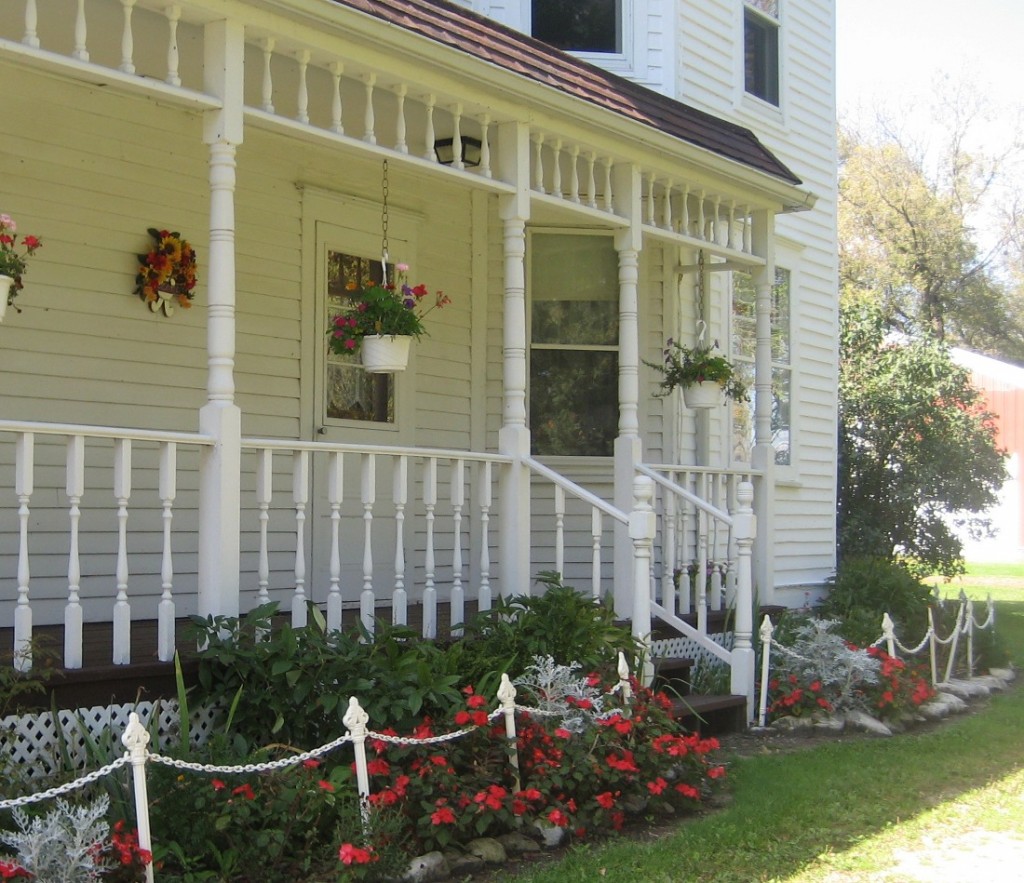
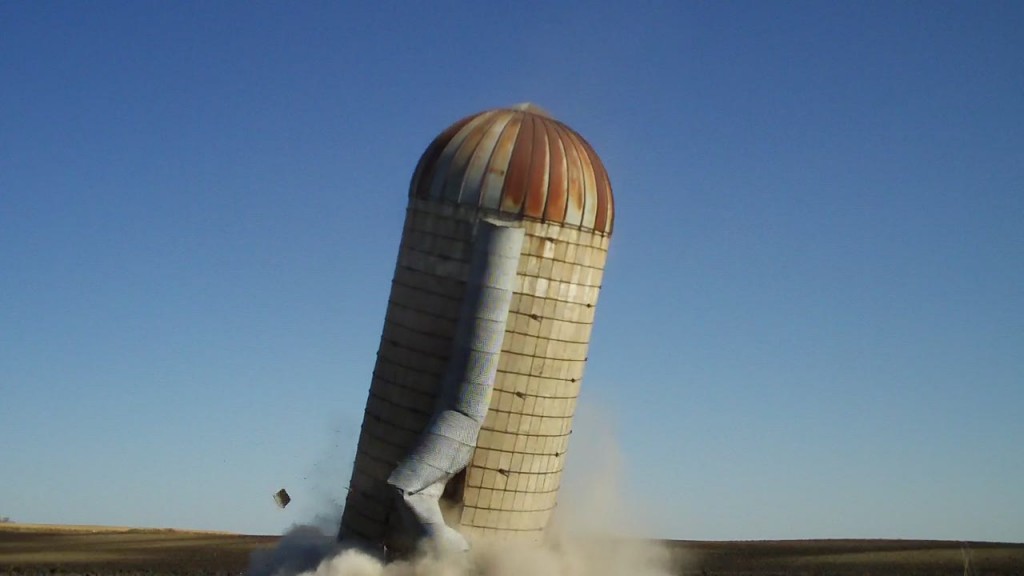
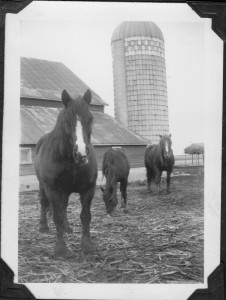 This old photo shows the barn and silo and the last of Dad’s work horses. This probably dates from early 1940’s. Sadly not many photos were taken of farm operations and fewer survived.
This old photo shows the barn and silo and the last of Dad’s work horses. This probably dates from early 1940’s. Sadly not many photos were taken of farm operations and fewer survived.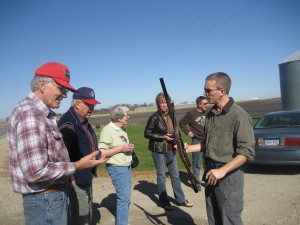 Here we are getting ready.
Here we are getting ready.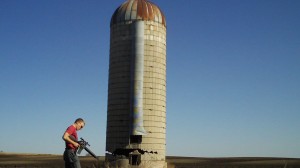
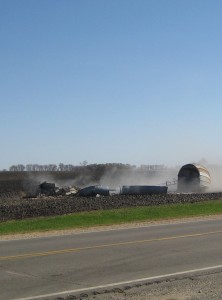
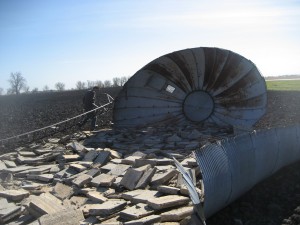 When it went, it went fast and it fell in a different direction than I would have guessed. I’m glad I was clear.
When it went, it went fast and it fell in a different direction than I would have guessed. I’m glad I was clear.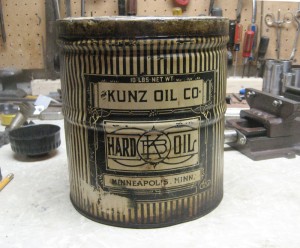 I was poking around in the old garage and found this container of old grease. I think it is quite old because of the label “hard oil” instead of the word grease being used. I tried searching for the Kunz oil co. of Mpls. without much luck. Maybe I’ll find something with a little more time invested. If any one has any information on the age of this can I would appreciate hearing from you.
I was poking around in the old garage and found this container of old grease. I think it is quite old because of the label “hard oil” instead of the word grease being used. I tried searching for the Kunz oil co. of Mpls. without much luck. Maybe I’ll find something with a little more time invested. If any one has any information on the age of this can I would appreciate hearing from you.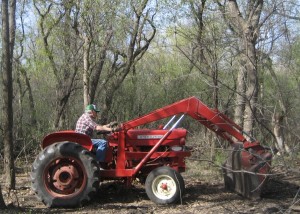 This is me on my loader tractor. I would have a hard time getting along without it. It is an antique, believe it or not. Manufactured in 1959, the year I graduated from high school. I purchased it for $1100 on an auction sale in the 1970’s when I bought dad’s farm. That same year my wife went to an auction in the neighborhood that had listed a heavy duty loader. With advice from a cousin, my wife joined the bidding. Now we we were newly back in the area and only the relatives and a few neighbors new Donna. When she called out her bid everyone turned and looked to see who this attractive young lady was. A woman bidding on a tractor loader was in itself unusual. The sale of the item was forgotten as they asked each other who was this stranger. You could here the whispers, “oh dat must be George Anderson’s Daughter-in-law, ya sure, she next to Pete Peterson an dat would be her cousin den”. The Auctioneer knew it was over, called sold for $220 to the young Lady. The men turned there attention back to the sale, with more than one regretting they had been distracted. I rebuilt the mount to fit the 340 and the result is a loader much stronger than the tractor.
This is me on my loader tractor. I would have a hard time getting along without it. It is an antique, believe it or not. Manufactured in 1959, the year I graduated from high school. I purchased it for $1100 on an auction sale in the 1970’s when I bought dad’s farm. That same year my wife went to an auction in the neighborhood that had listed a heavy duty loader. With advice from a cousin, my wife joined the bidding. Now we we were newly back in the area and only the relatives and a few neighbors new Donna. When she called out her bid everyone turned and looked to see who this attractive young lady was. A woman bidding on a tractor loader was in itself unusual. The sale of the item was forgotten as they asked each other who was this stranger. You could here the whispers, “oh dat must be George Anderson’s Daughter-in-law, ya sure, she next to Pete Peterson an dat would be her cousin den”. The Auctioneer knew it was over, called sold for $220 to the young Lady. The men turned there attention back to the sale, with more than one regretting they had been distracted. I rebuilt the mount to fit the 340 and the result is a loader much stronger than the tractor.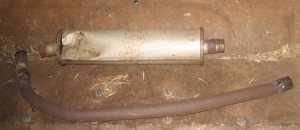 Time takes it toll on everything, no big deal just buy some new parts, simple. You Bet, not on a 1959 tractor. No longer available, a problem Hot Roders and car restorers run into all the time. Making the pipe was the easy part. Rule’s tire in Willmar was able to bent me a copy.The result is below, I had to tweak the pipe a bit by heating it with my old acetylene torch. Yaa, I know The power bender does a nicer job. Normally you have the unit your working on, next to the bender so its easy to do. I’m ten miles from town and I didn’t want to run back and forth or haul the tractor.
Time takes it toll on everything, no big deal just buy some new parts, simple. You Bet, not on a 1959 tractor. No longer available, a problem Hot Roders and car restorers run into all the time. Making the pipe was the easy part. Rule’s tire in Willmar was able to bent me a copy.The result is below, I had to tweak the pipe a bit by heating it with my old acetylene torch. Yaa, I know The power bender does a nicer job. Normally you have the unit your working on, next to the bender so its easy to do. I’m ten miles from town and I didn’t want to run back and forth or haul the tractor.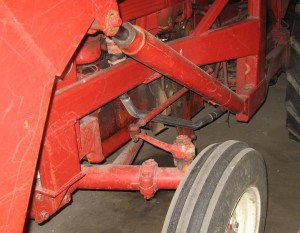 The problem came with the muffler. No one had one on hand that would fit. ordering was a possibility.Searching the parts books for dimensions and pipe size is a pain in the butt. Plus that all takes time. I wanted to use the tractor, so the thought of a straight pipe entered my mind. Not a good idea, I knew my hearing was already bad enough.
The problem came with the muffler. No one had one on hand that would fit. ordering was a possibility.Searching the parts books for dimensions and pipe size is a pain in the butt. Plus that all takes time. I wanted to use the tractor, so the thought of a straight pipe entered my mind. Not a good idea, I knew my hearing was already bad enough.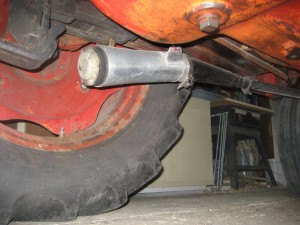
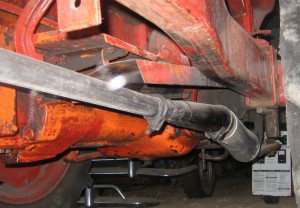
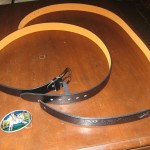
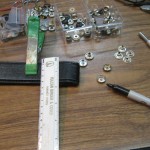
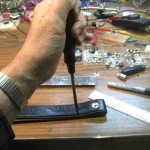
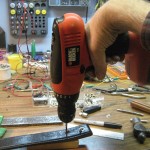
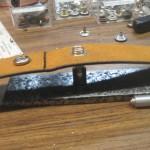
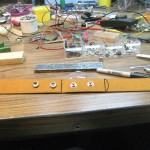 The finished product
The finished product 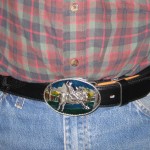
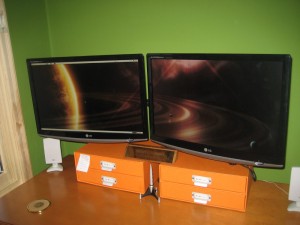
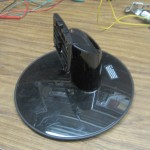 This is the original mount that took up much desk space and was a bit unstable
This is the original mount that took up much desk space and was a bit unstable 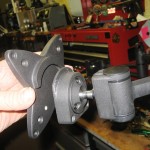
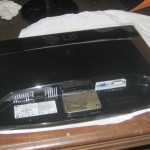
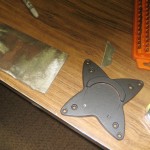
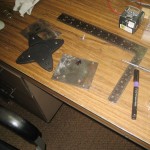
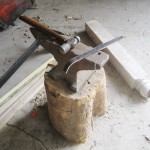
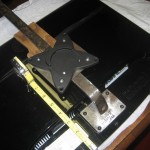
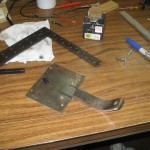
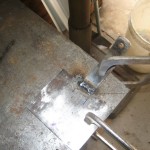
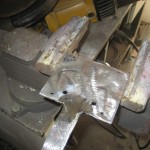
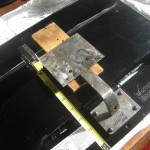
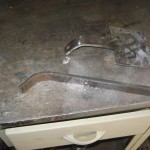
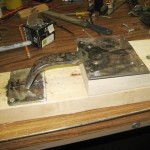
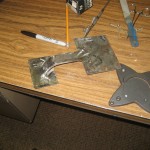
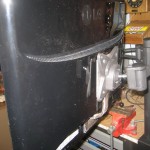
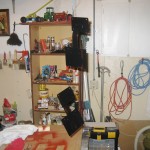
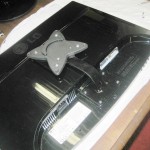
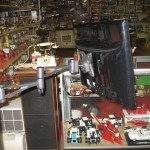
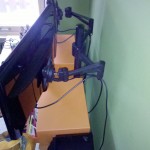
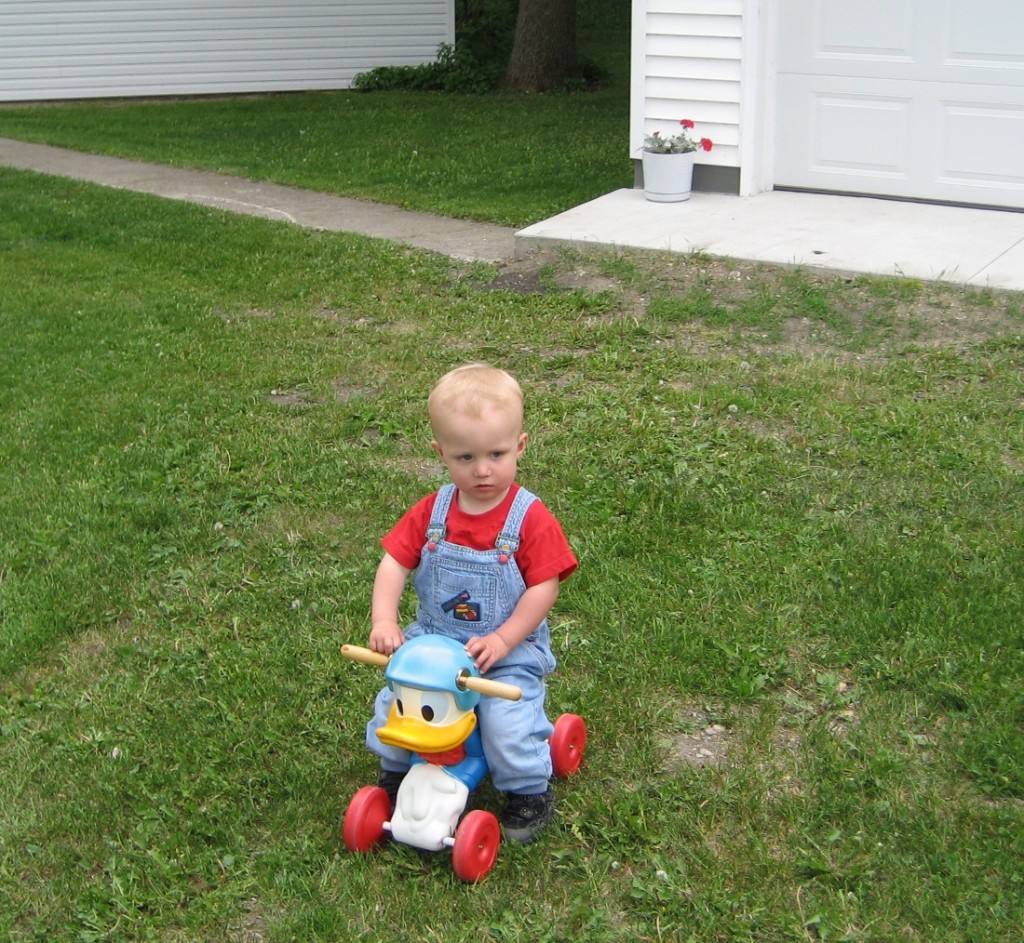
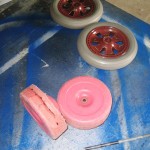
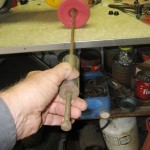
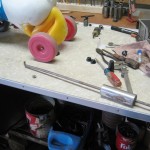
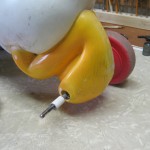 The old wheels were held on by retainers driven on the shaft. They are often difficult to remove without destroying everything. I used a tool I made in 1966, a simple slide hammer. The axles in Donald were too small for the new wheels so the search for new axles began. I wanted something stronger than mild steel, so after determining diameter, I took my old calliper and began searching the junk pile. I always search the used iron pile first before I go buy new iron. It was nice years ago when I worked at a place with a big rack of new iron, just go over and pick what you need. The plus side is looking through discarded and broken machines and things gives one ideas.
The old wheels were held on by retainers driven on the shaft. They are often difficult to remove without destroying everything. I used a tool I made in 1966, a simple slide hammer. The axles in Donald were too small for the new wheels so the search for new axles began. I wanted something stronger than mild steel, so after determining diameter, I took my old calliper and began searching the junk pile. I always search the used iron pile first before I go buy new iron. It was nice years ago when I worked at a place with a big rack of new iron, just go over and pick what you need. The plus side is looking through discarded and broken machines and things gives one ideas.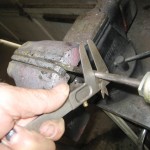
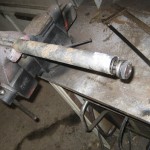
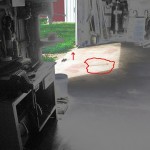
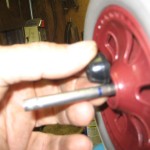
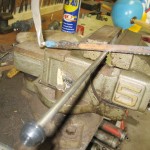
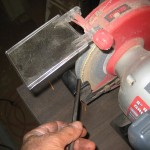
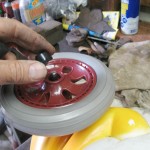
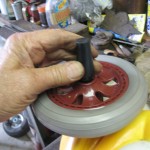
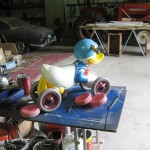 Below is one Happy Grandson, I don’t think Donald will last very long as Gunnar is too big for it already. he can go lightning fast down the side walk but I had to say no when he took it up to the top of the slide. No matter how long it lasts, that smile below was More than worth the effort I put into it.
Below is one Happy Grandson, I don’t think Donald will last very long as Gunnar is too big for it already. he can go lightning fast down the side walk but I had to say no when he took it up to the top of the slide. No matter how long it lasts, that smile below was More than worth the effort I put into it.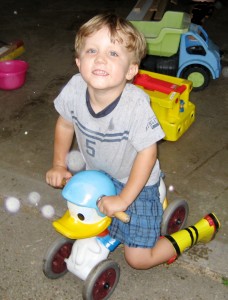 Update for September Gunnar has discovered the tricycle—–although he can still go faster down grade on Donald.
Update for September Gunnar has discovered the tricycle—–although he can still go faster down grade on Donald.